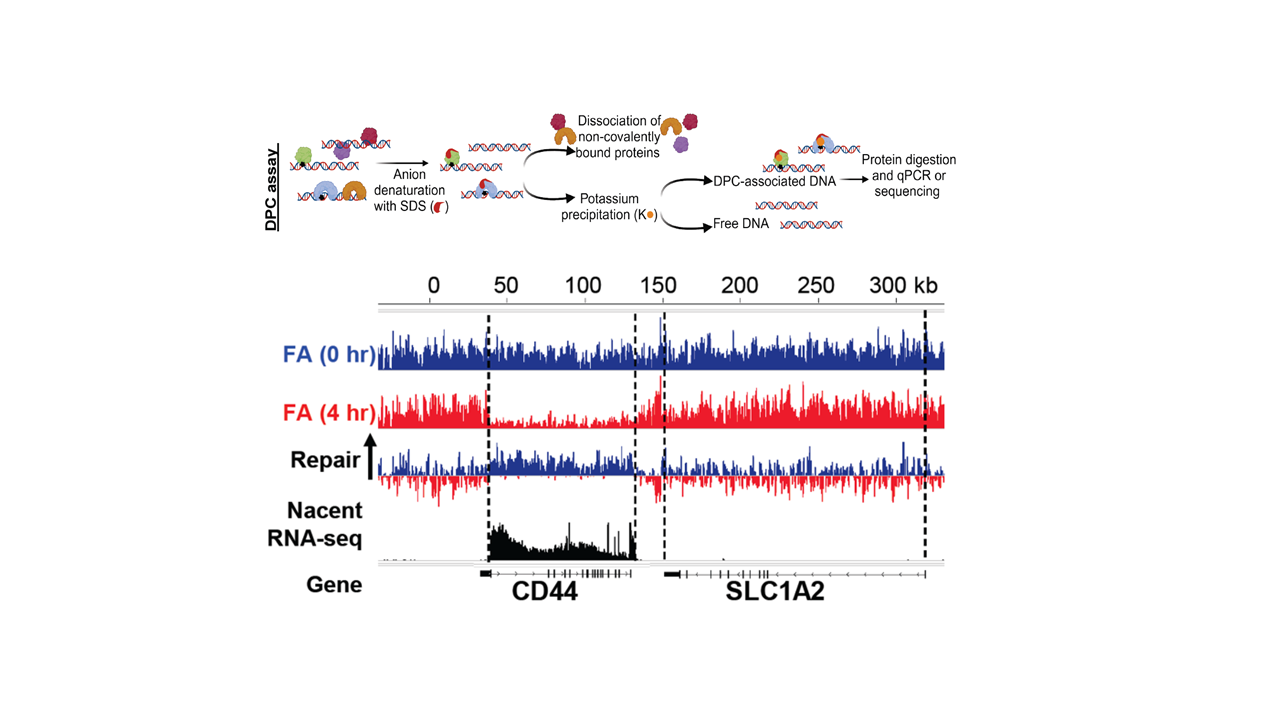Several commonly used cancer therapies rely on DNA-damage induction. DNA damage not only impedes replication, but also severely disturbs transcription. A new study driven by Oncode researcher Marjolein van Sluis and led by Oncode Investigator Jurgen Marteijn (Erasmus MC), has shown that DNA-protein crosslinks are repaired by a novel transcription-coupled DPC repair pathway. Their research has been published in Nature Cell Biology.
DNA-protein crosslinks, whereby proteins are covalently linked to DNA, can be formed by chemotherapeutics such as platinum drugs like cisplatin, or topoisomerase poisons like topotecan or etoposide. They can also be formed by reactive aldehydes, for example, formed during alcohol breakdown. These bulky lesions have previously been shown to be an obstacle for replication, but researchers have now shown that these bulky lesions also form a major hindrance for transcription. This will result in blocked nascent transcription and if not properly repaired, this will lead to a reduced cell functionality and apoptosis.

Figure: DNA protein crosslinks (DPCs) were sequenced directly (0 hr) and 4 hr after DPC induction. Transcription-coupled DPC repair is shown by loss of DPCs specifically in expressed genes (CD44) while no preferential repair is observed outside genes, or in non-expressed genes (SLC1A2).
Interestingly, researchers have demonstrated that these DNA-protein-crosslinks are repaired by a novel transcription-coupled DPC repair pathway. This repair happens by a thus far unknown mechanism, dependent on the TC-NER proteins CSA and CSB leading to the proteasomal degradation of the crosslinked protein.
A better understanding of the DNA repair pathways that counteract cancer therapies will help to improve therapy. Additionally, these results provide new insights why DNA-protein crosslinks not only affect cycling cells by blocking replication, but also severely affect non-cycling, post-mitotic tissues, such as neurons, by interfering with transcription. This DNA-damage induced transcription stress may explain the severe neurotoxicity as severe side effect of specific types of chemotherapy.